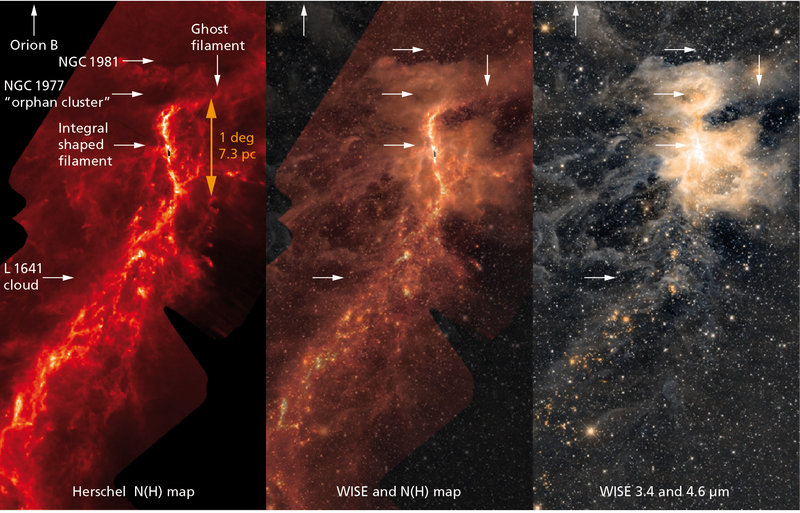Star Formation

Multi-wavelength observations of star forming systems as a function of environment with a focus on nearby high-mass systems that are forming star clusters. The most nearby of which is the Orion molecular cloud complex. With ALMA, we will push high resolution mm-wave studies beyond the local Milky Way. With GAIA and spectroscopic surveys we obtain new observational windows into the physics of star and star cluster formation.
Gas structure, mass, and gravitational potential: Observations of dust continuum emission allow for a quantification of the gas structure in star-forming regions, which has been found to be predominantly filamentary. In the absence of spacial filtering effect, the mass profiles of filaments, and therefore the gravitational potential can be measured. These estimated provide the basis for the interpretation of independent observational information, as outlined below.
Kinematics of gas: With different molecular line observations we trace the gas motions (at low and high densities) that are present in molecular clouds, allowing us to measure the gas motions (e.g., infall versus turbulence) in the material immediately before and durring the onset of star formation.
Young star kinematics and dynamics: The advent of large spectroscopic samples combined with GAIA data in young star forming regions provide key information on the dynamical state of stars immediately after they decouple from their birth cites in the dense gas.
The role of magnetic fields in star formation: We use different observational means to trace magnetic field strength and geometry, which in combination of the above information (kinematics and mass distributions) and simple theoretical arguments allow for a preliminary evaluation of the physical state of the gas (see e.g., the "Slingshot").
Identification and characterization of the youngest forming stars: with long-wavelength Herschel and APEX data we have identified extremely rare - and thus likely extremely young - protostellar systems, with estimated lifetimes of about 25 kyr. Such extremely young protostars are idea for studying the condition in the gas at the very beginning of star formation as well disk formation mechanisms.





